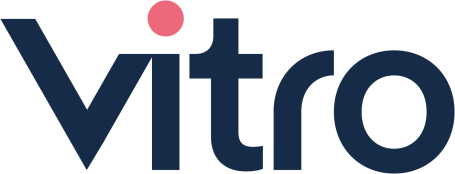
Why Diversity, Equality and Inclusion (DE&I) Matters and Why Organisational Design is Needed
Diversity, equality and inclusion (DE&I) are essential for organisations of all sizes and industries. DE&I can help organisations to attract and retain top talent, make better decisions and be more innovative.
Why DE&I matters
There are many reasons why DE&I is so important. Here are just a few:
- It creates a workforce modeled on our society which is ultimately good for business. Studies have shown that diverse and inclusive companies are more profitable and successful than those that are not. For example, a McKinsey study found that companies in the top quartile for racial and ethnic diversity are 35% more likely to have financial returns above their national industry medians.
- It creates a more equitable workplace. When everyone has an equal opportunity to succeed, regardless of their background or identity, it creates a fair and just workplace. This can lead to increased employee satisfaction, engagement and productivity.
- It helps foster innovation. Diverse teams bring a variety of perspectives and experiences to the table, which can lead to more creative and innovative solutions. For example, a study by the Boston Consulting Group found that companies with high levels of gender diversity were more likely to have above-average innovation revenues.
- DE&I reflects our world. The world is diverse and organisations need to reflect that diversity in their workforce. By embracing DE&I, organisations can better understand and serve their customers and communities.
Why do you need organisational design for DE&I?
Organisational design is the process of creating a structure and culture that supports the organisation's goals and objectives. It’s important for DE&I because it helps to create an environment where everyone is valued and respected.
Here are some specific ways organisational design could be used to support DE&I:
- Create a clearly communicated inclusive mission, vision and values statement. These should reflect the organisation and be inclusive of all employees, regardless of their background or identity.
- Set DE&I goals and metrics. You will need to agree clear goals for increasing diversity, equality and inclusion in the workforce so it’s important to measure and track these over time.
- Review and update your policies and procedures. As an organisation you may need to review your policies and procedures to ensure that they are relevant, fair and equitable.
- Provide training! All employees should receive training on DE&I. This training should cover topics such as unconscious bias, inclusive communication and microaggressions.
- Create employee resource groups (ERGs). ERGs are employee-led groups that support specific identity groups. ERGs can provide a safe space for employees to connect with others who share their experiences, and they can also advocate for change within the organisation.
Here are some examples of how organisations have used organisational design to support DE&I:
- Google has a number of programs and initiatives in place to promote DE&I. For example, Google has a ‘Diversity and Inclusion’ team that is responsible for developing and implementing DE&I initiatives across the company. Google also has a number of ERGs, including Black Googlers Network, Women@Google and Latin Googler Network.
- Microsoft has also made a strong commitment to DE&I. It has a ‘Diversity and Inclusion’ team responsible for overseeing the company's DE&I strategy. Microsoft also has a number of ERGs, including the Microsoft Black Employees Network, the Microsoft Women's Network, and the Microsoft Hispanic Network.
- Salesforce is another organisation that is committed to DE&I. It has a ‘Diversity and Inclusion’ team responsible for developing and implementing DE&I initiatives across the company. Salesforce again has a number of ERGs, including the Salesforce Equality Group, the Salesforce Women's Network and the Salesforce Veterans Network.
DE&I is essential for organisations of all sizes and industries to create a structure and culture where everyone feels valued and respected. It also has a huge impact on business performance. Studies have shown greater returns following the implementation of a DE&I strategy:
- In 2018, a study by Credit Suisse found that companies with the most diverse workforces outperformed their less diverse counterparts by 25% in terms of return on equality.
- A study by McKinsey in 2020 found that companies with diverse executive boards had a 95% higher return on equality than companies with less diverse boards.
- In 2020, a study by Glassdoor found that companies with high DE&I ratings had higher stock returns than companies with low DE&I ratings.
Here are some additional tips for implementing DE&I in your organisation:
- Start with your leadership. Leaders need to be committed to DE&I and set the tone for the organisation.
- Get employee feedback via surveys. Employees can provide valuable insights into how to make the workplace more diverse, equitable and inclusive.
- Be patient and persistent. It takes time so don't get discouraged if you don't see measurable results immediately.
At Vitro, we are proud of our DE&I procedures and policies for employees, which promote diverse thinking and innovation. This diversity of thought and experience leads to more creative and innovative ideas. Our commitment to DE&I has helped the company to develop new services that meet the needs of a diverse customer base and ensures we are able to attract and retain top talent, generate innovative ideas, and develop products and services that meet the needs of our clients.
About the author
Tom Fisher
Tom is Head of Client Engagement at Vitro which covers two key aspects: focus on maintaining and developing client relationships and using his experience as an implementation Consultant to lead solution ideation. Tom was a client within the construction industry before joining the team in 2018 and appreciates the importance of Vitro being a trusted partner.

By Tom Fisher
We need your consent to load the translations
We use a third-party service to translate the website content that may collect data about your activity. Please review the details in the privacy policy and accept the service to view the translations.

